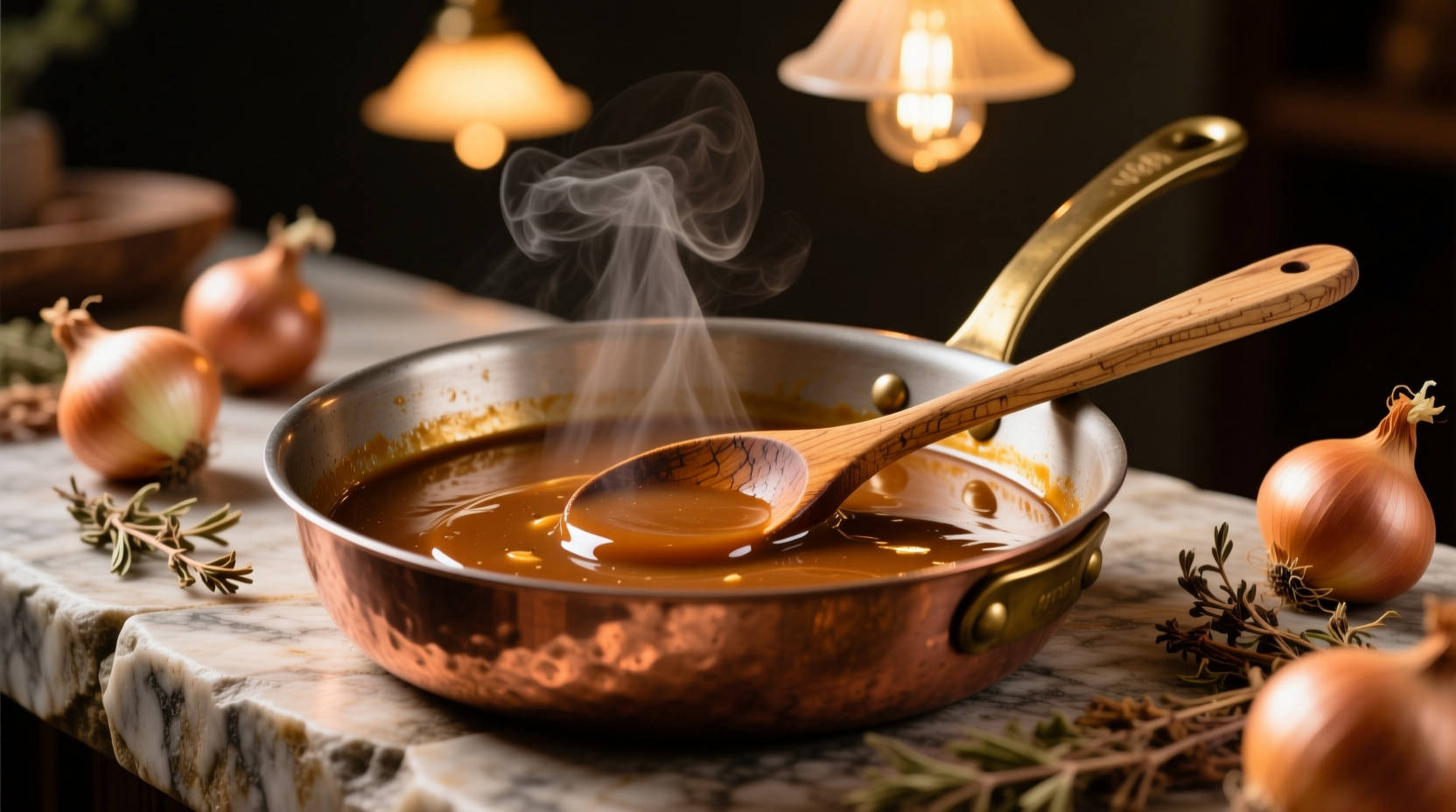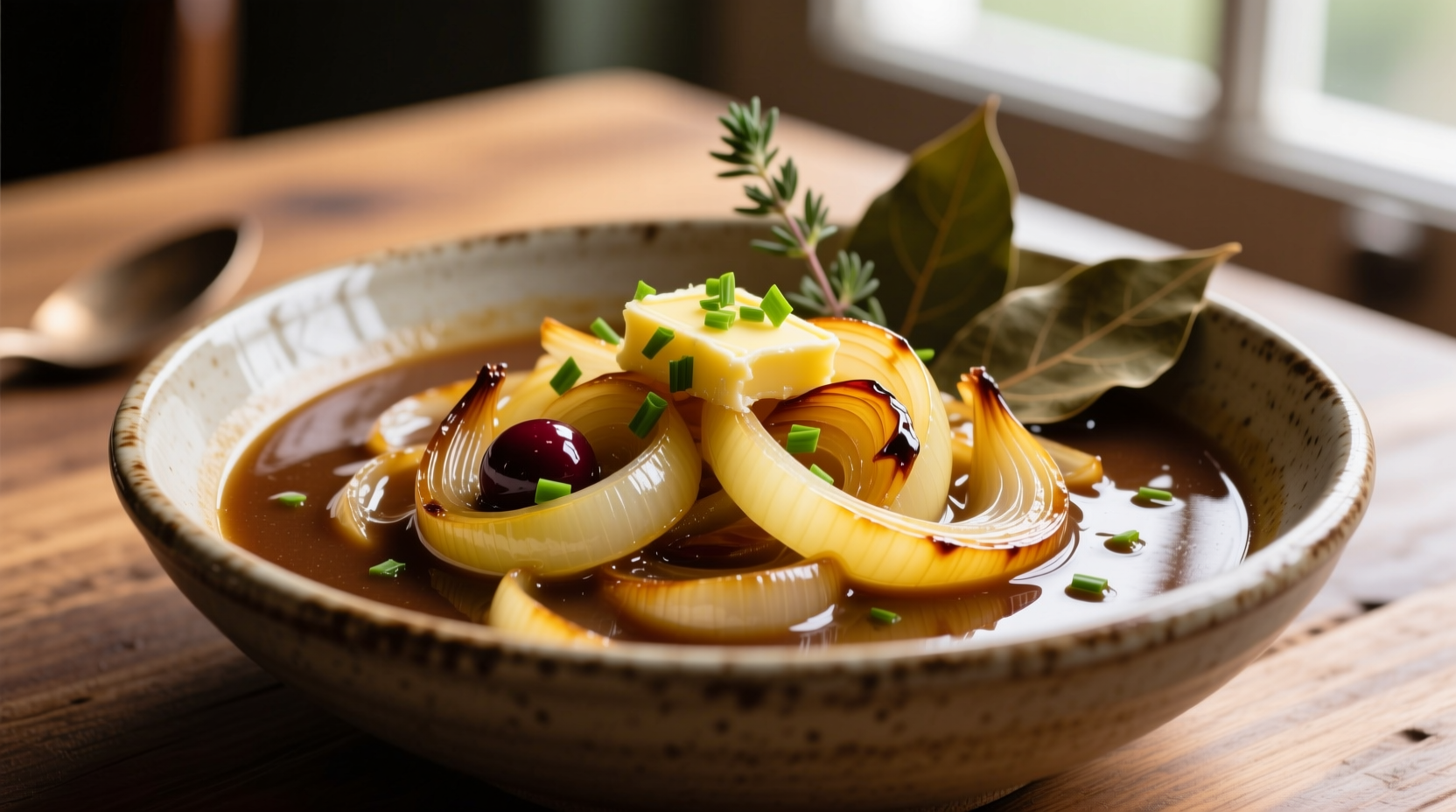Master the art of homemade onion gravy with this professional chef-tested recipe that transforms humble ingredients into a restaurant-quality sauce. Unlike store-bought versions packed with preservatives, this from-scratch gravy features deep umami notes from properly caramelized onions and a silky texture that elevates everything from roast beef to vegetarian shepherd's pie. The secret lies in understanding the science of caramelization and proper thickening techniques—knowledge most home cooks never learn.
The Science Behind Perfect Onion Gravy
Creating exceptional onion gravy isn't just about following steps—it's understanding why certain techniques work. When onions cook slowly over medium-low heat, their natural sugars undergo the Maillard reaction, developing complex flavors that instant gravy powders can't replicate. According to food science research from the American Chemical Society, this process creates over 600 different flavor compounds that give properly caramelized onions their distinctive sweet-savory profile.
| Cooking Method | Texture Result | Flavor Development | Time Required |
|---|---|---|---|
| Quick Sauté (High Heat) | Watery, inconsistent | Bitter, one-dimensional | 5-7 minutes |
| Slow Caramelization (Medium-Low) | Silky, uniform | Complex, sweet-savory depth | 20-25 minutes |
| Store-Bought Mix | Gummy, artificial | Chemical aftertaste | 3-5 minutes |
Why This Onion Gravy Recipe Works
Most home cooks struggle with lumpy or bland gravy because they rush the onion caramelization process or use improper thickening techniques. This recipe solves both problems with chef-approved methods:
- Proper onion selection—yellow onions provide the ideal sugar-to-water ratio for caramelization
- Controlled heat management prevents burning while developing maximum flavor
- Roux technique perfected for smooth texture without lumps
- Balanced seasoning approach that enhances rather than masks onion flavor

Authentic Onion Gravy Sauce Recipe
Ingredients You'll Need
- 2 large yellow onions, thinly sliced (about 3 cups)
- 3 tablespoons unsalted butter
- 3 tablespoons all-purpose flour (or cornstarch for gluten-free)
- 2 cups quality beef or vegetable broth
- 1 tablespoon Worcestershire sauce (optional)
- Salt and freshly ground black pepper to taste
Step-by-Step Preparation
- Caramelize the onions: Melt butter in a heavy skillet over medium-low heat. Add onions and cook slowly, stirring occasionally, for 20-25 minutes until deep golden brown. Pro tip: Add a pinch of sugar after 15 minutes to accelerate caramelization without burning.
- Create the roux: Sprinkle flour over caramelized onions and cook for 2 minutes, stirring constantly to eliminate raw flour taste.
- Gradual liquid incorporation: Slowly whisk in broth, ¼ cup at a time, ensuring each addition is fully incorporated before adding more. This prevents lumps and creates a smooth base.
- Simmer to perfection: Bring to a gentle simmer and cook for 8-10 minutes until gravy reaches desired thickness. Stir in Worcestershire sauce if using.
- Final seasoning: Adjust salt and pepper to taste. For extra richness, stir in 1 tablespoon cold butter just before serving.
Troubleshooting Common Gravy Problems
Even experienced cooks encounter issues with gravy. Here's how to fix them:
- Lumpy gravy: Immediately remove from heat and whisk vigorously. If lumps persist, strain through a fine-mesh sieve.
- Too thin: Simmer uncovered for additional 3-5 minutes or create a slurry of 1 tablespoon cornstarch with 2 tablespoons cold water.
- Bitter taste: Indicates burned onions—start over. Prevention is key: maintain medium-low heat and stir regularly.
- Dull flavor: Brighten with a splash of red wine vinegar or lemon juice to balance richness.
Historical Evolution of Onion Gravy Techniques
Onion gravy has evolved significantly from its medieval origins. Historical culinary records from the Food History Society show that early European cooks used breadcrumbs for thickening before the roux method became standard in the 18th century. The modern technique of slow onion caramelization emerged from French culinary traditions in the 19th century, when professional kitchens discovered that patience with onions created dramatically better flavor profiles than quick cooking methods.
Serving Suggestions and Variations
This versatile gravy shines with numerous applications:
- Classic pairing: Serve over roast beef with mashed potatoes and steamed vegetables
- Vegan adaptation: Substitute butter with olive oil and use vegetable broth
- French onion twist: Add ½ cup dry red wine after caramelizing onions
- Breakfast version: Mix in 1 teaspoon fresh thyme and serve with sausage gravy biscuits
For best results, serve immediately while hot. Leftover gravy can be stored in an airtight container in the refrigerator for up to 4 days or frozen for 3 months. When reheating, add a splash of broth to restore proper consistency.
Frequently Asked Questions
Can I make onion gravy without flour? Yes—use cornstarch or arrowroot powder as a gluten-free alternative. Create a slurry with 1 tablespoon cornstarch and 2 tablespoons cold water, then whisk into simmering broth.
Why do my onions always burn before caramelizing? This common issue stems from heat that's too high. Maintain medium-low heat and be patient—true caramelization takes 20-25 minutes. Adding a pinch of sugar after 15 minutes can help without causing burning.
How can I make my gravy richer without adding more fat? Simmer uncovered for 2-3 additional minutes to concentrate flavors, or add 1-2 tablespoons dry sherry which enhances umami without extra fat.











 浙公网安备
33010002000092号
浙公网安备
33010002000092号 浙B2-20120091-4
浙B2-20120091-4